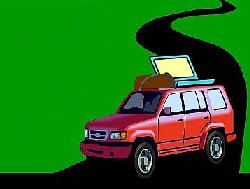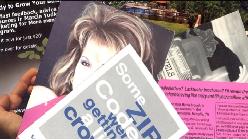How to Profit From the Twists
and Turns of Pricing Psychology
by Marcia Yudkin
Prices are numbers, but
how those numbers are selected, justified
and displayed can have much more impact than
bean counters would like to admit.
Pricing can increase or
dampen desire, and you'd be horribly
mistaken if you assumed lower prices always
win the battle for buyers. In fact, there
are a great many subtleties in pricing that
surprise even the researchers in this field.
Many of the studies are
carried out by researchers in behavioral
economics, which studies the way social,
cognitive and emotional factors affect the
economic decisions of consumers and others.
Another hotbed of pricing research is the
field of menu engineering, which looks at
how the wording, images and placement of
various items on restaurant menus affect
which items get ordered most. And then there
are countless controlled tests carried out
by sophisticated marketers and their
consultants.
Recent scientific findings
reveal some unintuitive principles of
pricing psychology that you might be able to
put into practice in your own business. For
example:
* Presentation order
matters. People are more likely to buy a $10
item if you show it after $100 and $1,000
items than before. Always show the most
expensive option first.
* People love windfalls.
Offers have greater appeal when you promise
additional items of a different type as extras
than when bundling the same items into a single
package.
* People love savings. When
you call attention to the amount of a discount,
customers focus on that amount as earnings
rather than think about what they spent.
* People hate surprises. When
customers expect to pay $21 and do, they're much
happier than when they expect to pay $20 and
encounter a charge of $21.
* People dislike separate
charges. It hurts more to pay $50 plus $120 plus
$75 than $245. If you can then arrange for that
$245 to be deducted automatically from expected
income, as from paychecks or tax refunds, the
payment psychologically disappears.
Other lessons about pricing
from veteran marketers:
* Posting high prices for
professional service firms (who traditionally
post no prices at all) attracts million-dollar
clients, because it helps eliminate doubts about
the value of a firm's services. If others have
paid premium prices, they must be worth it,
people think, consciously or unconsciously.
* Sheer nerve has a role in
pricing. If you don't dare to price your wares
high, you'll never discover that a sufficient
number of buyers accept those prices without
question.
|
Run Your Business From the Beach, Shangri-La or Anywhere
Got the urge to hit the
road? Discover tips, tools and strategies for continuing to bring in the moolah while vacationing, traveling, moving to a temporary location or living full-time in an RV.
This course resolves your "but what about..." concerns about taking off.
Be a Digital Nomad. |

Take Your Business on the
Road Course |
|
* Two-tier pricing, with
regular and deluxe options, adds to revenues not
only from the higher-priced product or service,
but also from increased sales of the regular
version. The higher tier boosts the perceived
value of the lower-priced option.
* In a market where many
customers shop by price, there are always others
willing to pay premium prices for extra value:
faster delivery, guaranteed return phone calls,
training or advice included in the price or a
bundling of products and services not available
elsewhere.
* What someone can afford and
what they will pay aren't necessarily related in
a logical or predictable way. For any given
offering, one customer may have next to no
income or savings yet decide they have to have
it, while someone with a Fortune 100-sized
budget decides the same offering costs too much.
Copyright 2010 Marcia Yudkin.
All rights reserved.
No-Hype Marketing Online Courses
Create a Practical One-Year Marketing Plan
Teleteach for Profit: Set Up Profitable
Teleseminars & Webinars
The Mighty Postcard Marketing Course
Marketing for Introverts |






